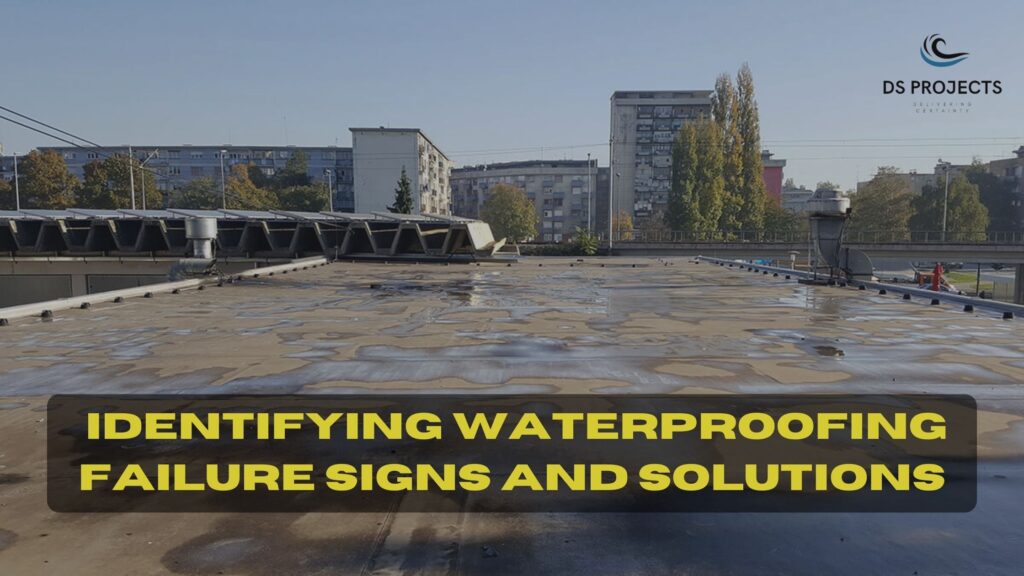
Understanding Waterproofing Failure Signs: A Comprehensive Guide
Waterproofing is a crucial aspect of building maintenance, yet it often goes unnoticed until significant damage occurs. Recognizing the early signs of waterproofing failure can save you from costly repairs and protect the integrity of your property. In this comprehensive guide, we’ll delve into the common causes of waterproofing issues, visible and structural indicators of failure, the severe consequences of neglecting these problems, and practical solutions to address and prevent future damage. By understanding these key aspects, you’ll be better equipped to maintain a safe and dry environment in your home or building.
Common Causes of Waterproofing Failure
Waterproofing is essential to maintaining a building’s integrity, but various factors can lead to its failure. Understanding these causes is crucial for preventing potential damage and ensuring the longevity of the waterproofing system.
Here are the key factors contributing to waterproofing failure:
Poor Installation Practices
- Explanation of Improper Techniques and Materials
- The use of substandard or incompatible materials can compromise the effectiveness of the waterproofing system.
- Inadequate surface preparation before application can result in poor adhesion and coverage.
- Incorrect application methods, such as uneven coating or insufficient drying time between layers, can lead to weak points.
- Impact on the Longevity of Waterproofing
- Improper installation significantly reduces the lifespan of the waterproofing system.
- Early deterioration and failure are common, leading to frequent repairs and increased maintenance costs.
Natural Wear and Tear
- Ageing of Materials
- Over time, even the best waterproofing materials degrade. This natural ageing process can result in cracks, brittleness, and a loss of elasticity.
- UV exposure can accelerate material degradation, particularly for external waterproofing solutions.
- Environmental Factors Contributing to Degradation
- Harsh weather conditions, such as heavy rain, snow, and extreme temperatures, can stress waterproofing systems.
- Pollution and chemical exposure can also deteriorate materials faster than expected.
Structural Movement
- Effects of Building Settling and Shifting
- Buildings naturally settle over time, which can cause minor shifts in the structure. These movements can create gaps and cracks in the waterproofing layer.
- Vibrations from nearby construction, heavy traffic, or natural events like earthquakes can exacerbate these issues.
- Cracks and Gaps Allowing Water Ingress
- Even small cracks and gaps can allow water to penetrate the building envelope, leading to significant damage over time.
- Water ingress through these openings can cause internal damage and compromise the building’s structural integrity.
Inadequate Maintenance
- Importance of Regular Inspections
- Regular inspections are vital to identify and address minor issues before they become major problems. This includes checking for signs of wear, damage, and potential failure points.
- Consequences of Neglect
- Neglecting routine maintenance can lead to undetected problems, which can escalate quickly and cause extensive damage.
- Lack of timely repairs can fail the entire waterproofing system, leading to costly and extensive repairs.
Visible Signs of Waterproofing Failure
Early detection of waterproofing failure is crucial to preventing extensive damage to your property.
Here are the visible signs to watch for:

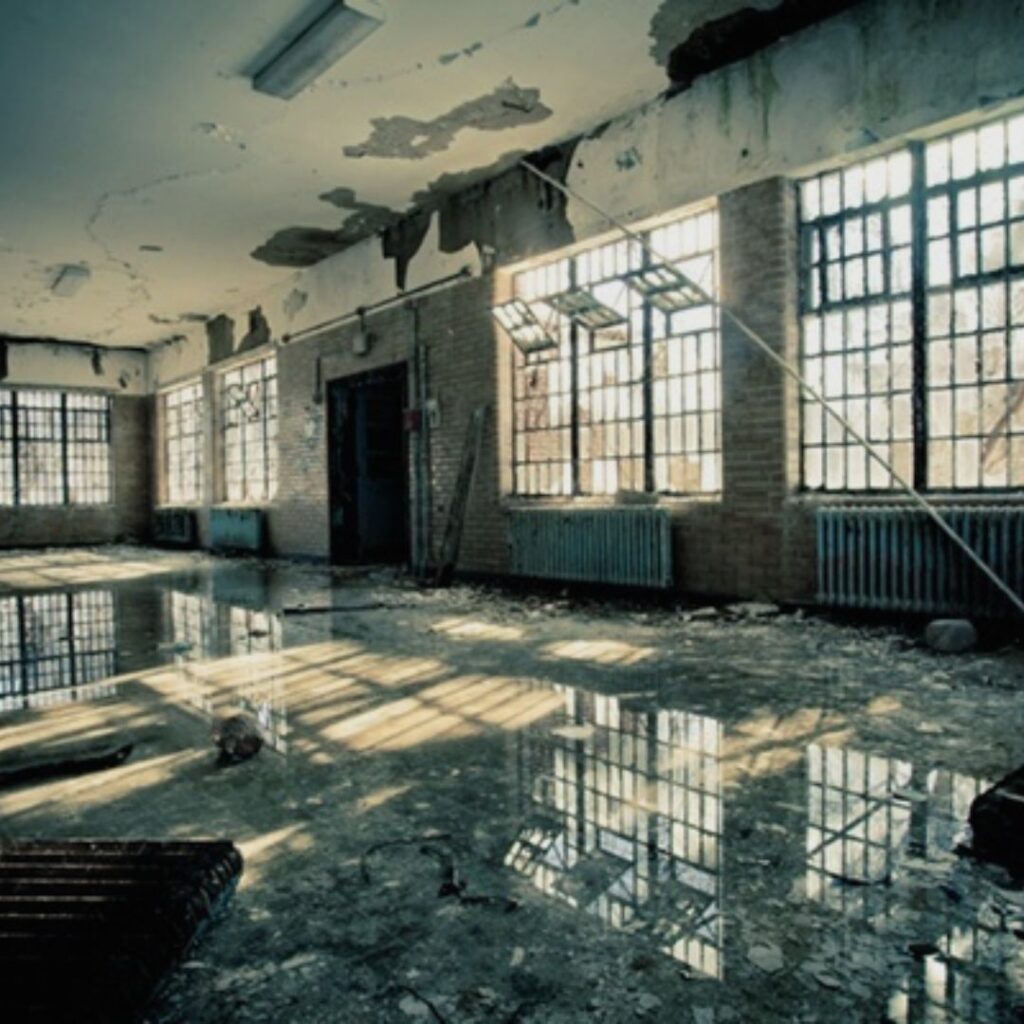

Damp Spots and Stains
- Identifying Moisture Marks on Walls and Ceilings
- Look for discolored patches on walls and ceilings, which often appear as brown, yellow, or darker areas.
- These spots are typically irregular in shape and may change size over time as the moisture problem worsens.
- Common Areas Where Dampness Appears
- Basements and lower levels of buildings are particularly prone to damp spots due to their proximity to the ground.
- Bathrooms, kitchens, and areas around windows and doors are also common sites for moisture marks.
Mold and Mildew Growth
- Health Risks Associated with Mold
- Mold exposure can cause a range of health issues, including respiratory problems, allergies, and asthma.
- It can be particularly harmful to individuals with weakened immune systems or pre-existing respiratory conditions.
- Conditions That Promote Mold Growth
- Mold thrives in damp, warm, and poorly ventilated environments.
- Leaky roofs, walls, and plumbing issues that introduce moisture create ideal conditions for Mold to grow.
Peeling Paint and Wallpaper
- How Water Damage Causes Paint and Wallpaper to Deteriorate
- Continuous exposure to moisture causes paint to bubble, peel, and crack.
- Wallpaper may start to loosen at the edges, blister, or peel away from the wall.
- Areas to check for peeling
- Inspect areas around windows, doors, and ceilings, particularly in rooms with high humidity like bathrooms and kitchens.
- Pay attention to any walls that border the exterior of the building, as these are more susceptible to water ingress.
Musty Odors
- Recognizing the smell of moisture damage
- A musty or damp smell is a strong indicator of the presence of Mould or mildew.
- This odor is often described as earthy, stale, or similar to wet socks.
- Hidden Places Where Odors Originate
- Musty smells can originate from behind walls, under carpets, or in less accessible areas like crawl spaces and attics.
- Pay attention to areas near plumbing fixtures, basements, and areas with poor ventilation.
Consequences of Ignoring Waterproofing Issues
Failing to address waterproofing problems can lead to severe repercussions for your property.
Here are the critical consequences of neglecting waterproofing issues:
- Long-Term Impacts on Building Integrity:
- Water infiltration can weaken the structural components of a building, including foundations, walls, and floors.
- Persistent moisture can cause wood to rot, steel to rust, and concrete to degrade, compromising the building’s stability.
- Over time, this can lead to significant structural failures, posing safety risks to occupants.
- Costs associated with major repairs
- Repairing extensive water damage is often costly, requiring substantial financial investment.
- Major repairs can include replacing structural components, repairing foundations, and addressing secondary damage like mold remediation, The longer the waterproofing issues are ignored, the more expensive and extensive the repairs become.
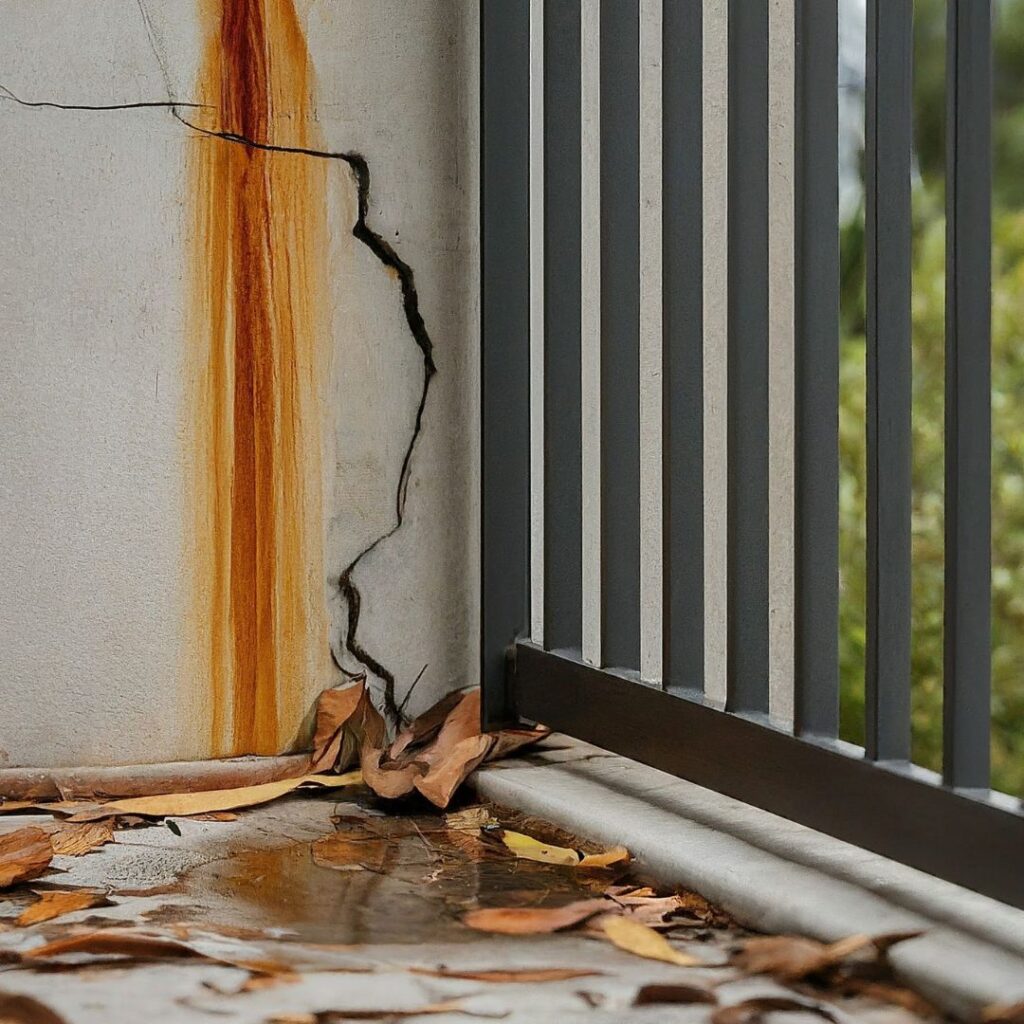
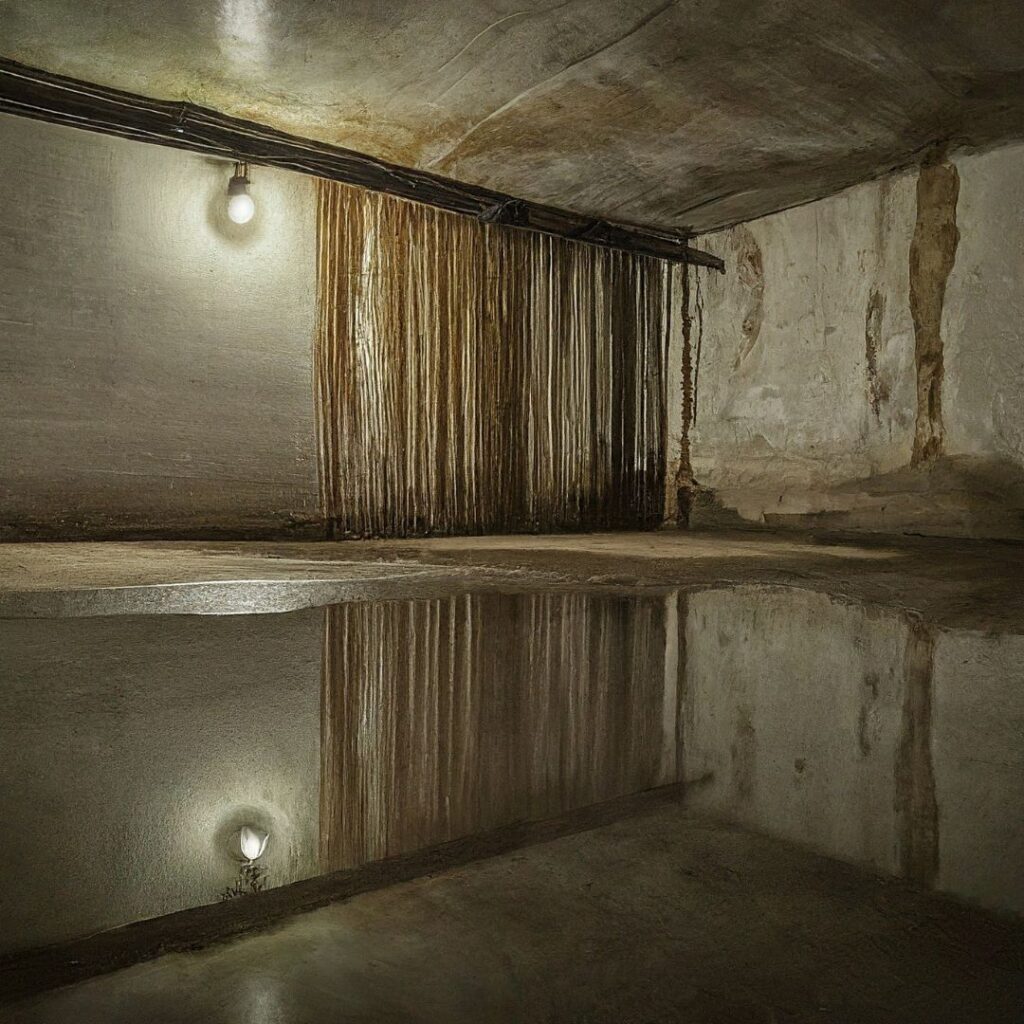
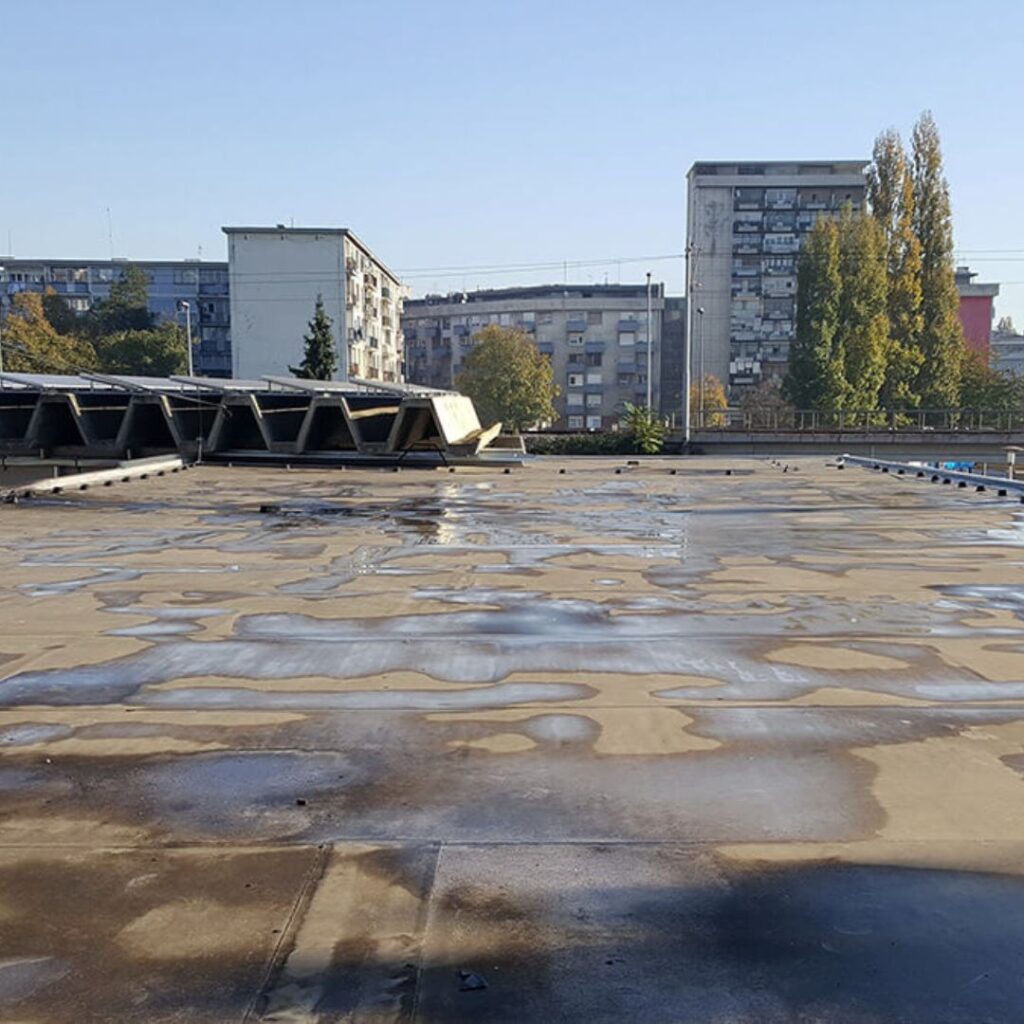
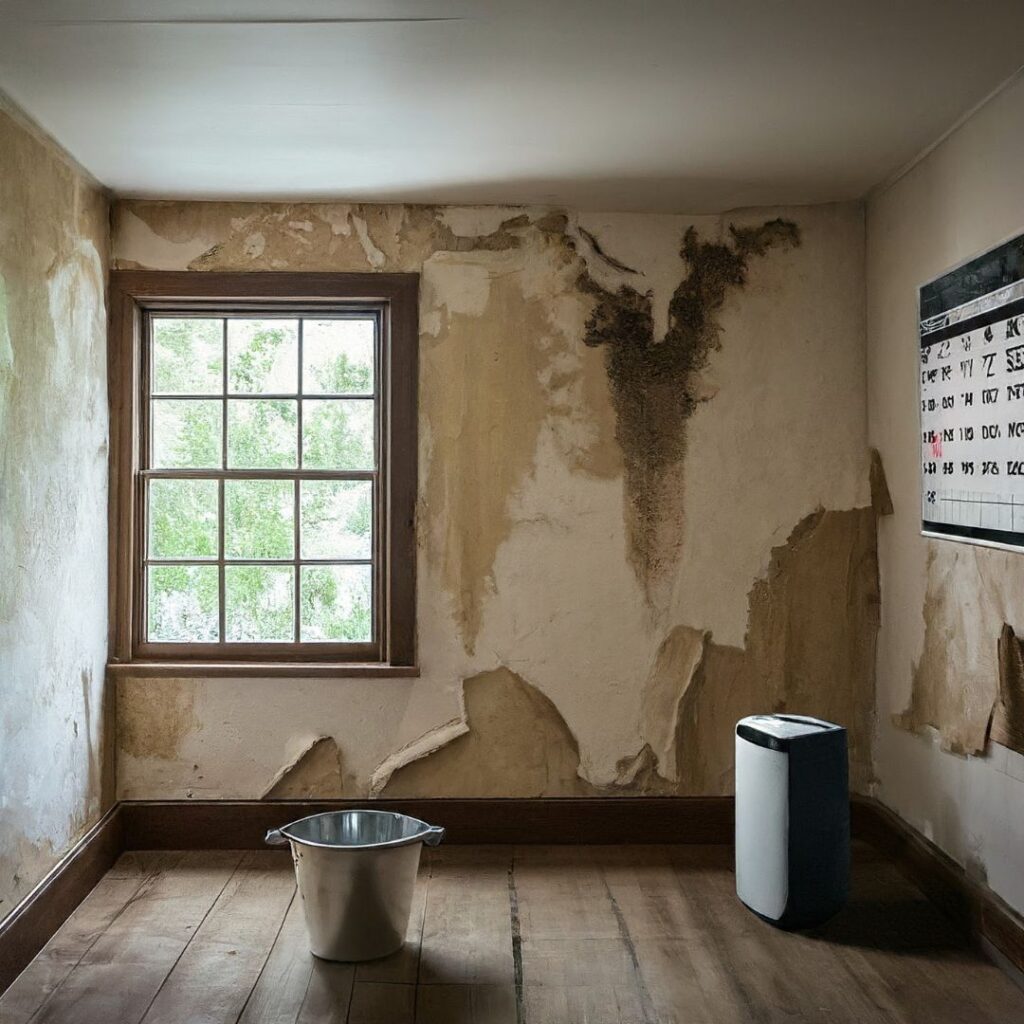
Health Hazards
- Respiratory Issues from Mould Exposure
- Mould thrives in damp environments and can quickly spread within buildings with waterproofing failures.
- Exposure to mould spores can cause respiratory issues, including coughing, wheezing, and shortness of breath.
- Individuals with asthma, allergies, or weakened immune systems are particularly vulnerable to Mould-related health problems.
- Allergies and Other Health Problems
- Mould exposure can also trigger allergic reactions such as sneezing, a runny nose, red eyes, and skin rashes.
- Long-term mould exposure can lead to chronic health conditions, including sinus infections and more severe respiratory illnesses.
- In severe cases, toxic mould species can produce mycotoxins, which can lead to serious health issues.
Property Value Reduction
- How Water Damage Affects Property Value
- Visible water damage, mould, and structural issues can significantly reduce a property’s market value.
- Prospective buyers are often deterred by the potential costs and risks associated with water-damaged properties.
- Challenges in Selling Water-Damaged Properties
- Properties with unresolved waterproofing issues are harder to sell and may stay on the market for longer.
- Buyers may demand substantial price reductions or request that the issues be fixed before completing the purchase.
- Disclosure laws in many regions require sellers to inform potential buyers of known water damage, further complicating the sale process.
Solutions and Preventative Measures
Proactively addressing waterproofing issues and implementing preventative measures can protect your property from significant damage and ensure its longevity.
Here are effective solutions and preventative measures:
Regular Inspections and Maintenance
- Tips for Routine Checks
- Visual Inspections: Regularly check for visible signs of water damage, such as damp spots, Mould, peeling paint, and efflorescence.
- Touch and Smell: Feel for dampness in walls and floors and be alert to musty odors indicating hidden moisture.
- Drainage Systems: Ensure gutters and downspouts are clear of debris and functioning correctly to direct water away from the building.
- Basements and Crawl Spaces: Inspect these areas for signs of water pooling, mold, and structural cracks.
- Exterior Checks: Examine the roof, walls, and foundation for cracks and ensure proper sealing around windows and doors.
- Professional vs. DIY Inspections
- DIY Inspections: Suitable for routine checks and minor issues, using basic tools like moisture meters and infrared cameras.
- Professional inspections are essential for comprehensive assessments, identifying hidden problems, and providing expert recommendations. Professionals use advanced diagnostic tools and have the expertise to detect issues that may be overlooked during DIY inspections.
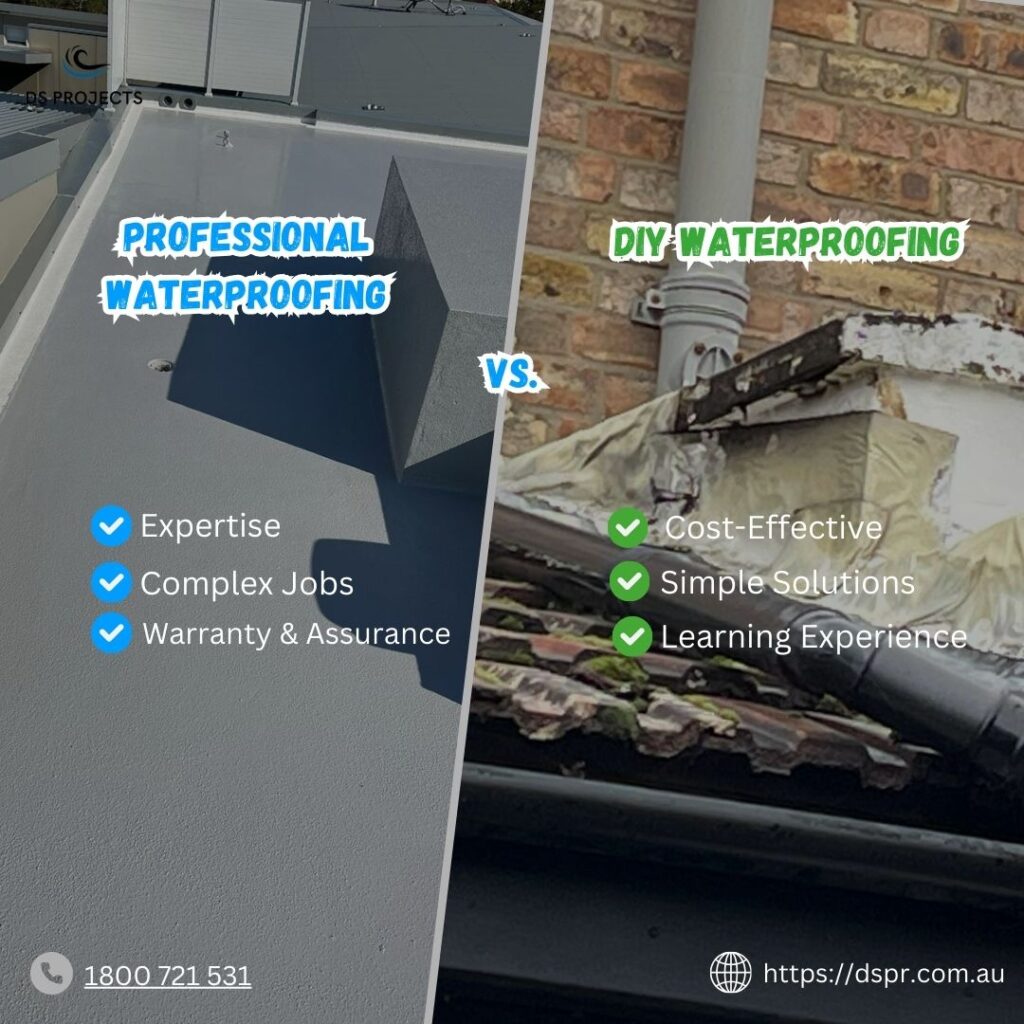
Repairing and Upgrading Waterproofing Systems
- Latest Waterproofing Technologies and Materials
- Liquid Membranes: Flexible and durable, liquid membranes are applied as a coating and provide seamless waterproofing.
- Sheet Membranes: prefabricated sheets made of rubber or asphalt that offer robust protection, particularly for roofs and foundations.
- Crystalline Waterproofing: Innovative materials that penetrate concrete to form crystals, blocking water pathways and enhancing durability.
- Elastomeric Coatings: highly flexible and elastic coatings that expand and contract with the building, providing long-lasting protection.
- Steps to Repair and Upgrade Existing Systems
- Identify Problem Areas: Conduct a thorough inspection to pinpoint areas needing repair or upgrade.
- Select Appropriate Materials: Choose materials and technologies best suited for the specific issues identified.
- Prepare the Surface: Clean and prepare the surface to ensure proper adhesion and effectiveness of the waterproofing materials.
- Apply Waterproofing Solutions: Follow manufacturer guidelines for application, ensuring even coverage and sufficient curing time.
- Test and Inspect: After application, test the waterproofing system to ensure it is functioning correctly and inspect for any missed areas.
- Benefits of Hiring Experts
- Expertise and Experience: Professionals bring specialized knowledge and experience to diagnose and address complex waterproofing issues effectively.
- Advanced Tools and Techniques: Access to the latest diagnostic tools and waterproofing technologies ensures comprehensive protection.
- Guaranteed Results: Many professional services offer warranties and guarantees, providing peace of mind and long-term assurance.
- Research and Reviews: Look for contractors with positive reviews and testimonials from previous clients.
- Certifications and Licenses: Ensure the contractor is licensed, insured, and certified by relevant industry bodies.
- Detailed Proposals: Request detailed proposals outlining the scope of work, materials to be used, timelines, and costs.
- Experience and Specialization: Choose contractors with specific experience in the type of waterproofing needed for your property.
- References: Ask for references and contact previous clients to gauge satisfaction with the contractor’s work and reliability.
Conclusion
Waterproofing is crucial for maintaining your property. Understanding the common causes—poor installation, natural wear and tear, structural movement, and inadequate maintenance—helps in preventing failures. Recognize signs like damp spots, mold growth, peeling paint, musty odors, and structural indicators such as cracks, efflorescence, and water pooling for early intervention.
Ignoring these issues can lead to severe structural damage, health risks from mold, and reduced property value. Regular inspections, timely maintenance, and using advanced waterproofing technologies are essential. Hiring professional waterproofing services ensures comprehensive protection.
Act now to prevent water damage and maintain a safe, valuable property. Proactive maintenance and repairs are key to a secure, dry building. Protect your investment from the effects of water damage.
Author
-

Brad has over 25 years experience in the residential and commercial construction and drives the preparation and quality of the projects that DS Projects are known for. The model of our business is forming long lasting and mutually rewarding relationships with our clients, teams, suppliers and alliance partners.
View all posts


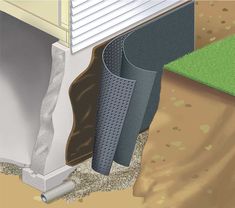
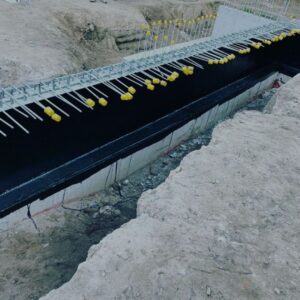
Can you be more specific about the content of your article? After reading it, I still have some doubts. Hope you can help me.
Thank you for your feedback and for reading my article. I’m happy to clarify any doubts you have. Could you please specify which parts of the article you found unclear or what specific questions you have? This way, I can provide you with more detailed information and address your concerns directly.
Very interesting points you have noted, thanks for putting
up.Expand blog
Thanks for sharing. I read many of your blog posts, cool, your blog is very good.